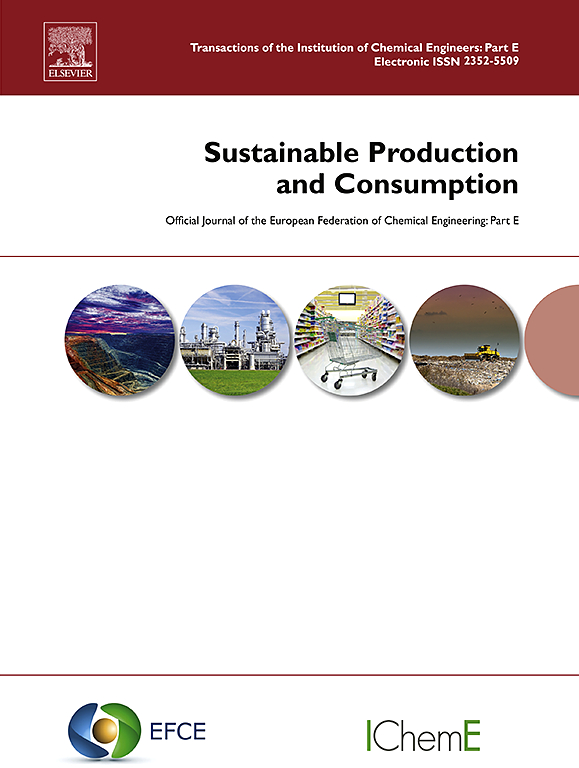Food waste and the effects of waste reduction in China's catering industry
IF 10.9
1区 环境科学与生态学
Q1 ENVIRONMENTAL STUDIES
引用次数: 0
Abstract
Reducing food waste is crucial for combating hunger. With economic development and rising income levels, more Chinese people are dining out, which may lead to an increase in the amount of food wasted in the catering industry. However, efforts to reduce food waste are hindered by a lack of accurate data. On the basis of nationwide survey data from 1957 restaurants across China, we critically assessed food waste and its impacts on resources, the environment and ecology in China's catering industry. Moreover, we conducted scenario analysis to evaluate the effects of waste reduction with reference to the survey and the UN 2030 Sustainable Development Goals. We also used an econometric model to analyze macrofactors affecting food waste in China's catering industry. The results show that, food waste in China's catering industry averages 74.16 g per capita per meal, and that restaurants in the Northeast China, large-scale restaurants, and dinner restaurants are more likely to produce large amounts of food waste. The total amount of food waste in China's catering industry has reached 23.73 million tons of food, which is equal to 47.33 million tons (CO2e) of carbon footprint, 40.3 billion m3 of water footprint, and 31.56 million hectares of ecological footprint. If the Sustainable Development Goal of halving food waste by 2030 is achieved, reducing food waste in China's catering industry could save 11.87 million tons of food, and reduce the carbon, water, and ecological footprints by 23.66 million tons (CO2e), 20.15 billion m3, and 15.78 million hectares, respectively. Econometric analysis revealed that the provincial macrofactors affecting food waste in China's catering industry are the gross domestic product (GDP), the average annual GDP growth rate, grain production, and the ratio of grain consumption to total food consumption. Strategies should be developed by the government and stakeholders to increase the community's awareness of food savings and conservation.
中国餐饮业的食物浪费和减少浪费的效果
减少食物浪费是消除饥饿的关键。随着经济的发展和收入水平的提高,越来越多的中国人开始外出就餐,这可能会导致餐饮业的食物浪费量增加。然而,由于缺乏准确的数据,减少食物浪费的努力受到阻碍。基于对全国 1957 家餐厅的调查数据,我们对中国餐饮业的食物浪费及其对资源、环境和生态的影响进行了严格评估。此外,我们还进行了情景分析,参照调查数据和联合国 2030 年可持续发展目标,评估了减少浪费的效果。我们还使用计量经济模型分析了影响中国餐饮业食物浪费的宏观因素。结果显示,中国餐饮业的食物浪费平均为人均每餐 74.16 克,东北地区餐馆、大型餐馆和晚餐餐馆更容易产生大量食物浪费。中国餐饮业餐厨垃圾总量已达 2373 万吨,相当于 4733 万吨(CO2e)的碳足迹、403 亿立方米的水足迹和 3156 万公顷的生态足迹。如果实现到 2030 年将食物浪费减半的可持续发展目标,中国餐饮业减少食物浪费可节约 1187 万吨食物,减少的碳足迹、水足迹和生态足迹分别为 2366 万吨(CO2e)、201.5 亿立方米和 1578 万公顷。计量经济学分析表明,影响中国餐饮业食物浪费的省内宏观因素是国内生产总值(GDP)、GDP 年均增长率、粮食产量和粮食消费占食品消费总量的比例。政府和利益相关方应制定相关策略,提高全社会的节粮意识和节约意识。
本文章由计算机程序翻译,如有差异,请以英文原文为准。
求助全文
约1分钟内获得全文
求助全文
来源期刊

Sustainable Production and Consumption
Environmental Science-Environmental Engineering
CiteScore
17.40
自引率
7.40%
发文量
389
审稿时长
13 days
期刊介绍:
Sustainable production and consumption refers to the production and utilization of goods and services in a way that benefits society, is economically viable, and has minimal environmental impact throughout its entire lifespan. Our journal is dedicated to publishing top-notch interdisciplinary research and practical studies in this emerging field. We take a distinctive approach by examining the interplay between technology, consumption patterns, and policy to identify sustainable solutions for both production and consumption systems.
 求助内容:
求助内容: 应助结果提醒方式:
应助结果提醒方式:


